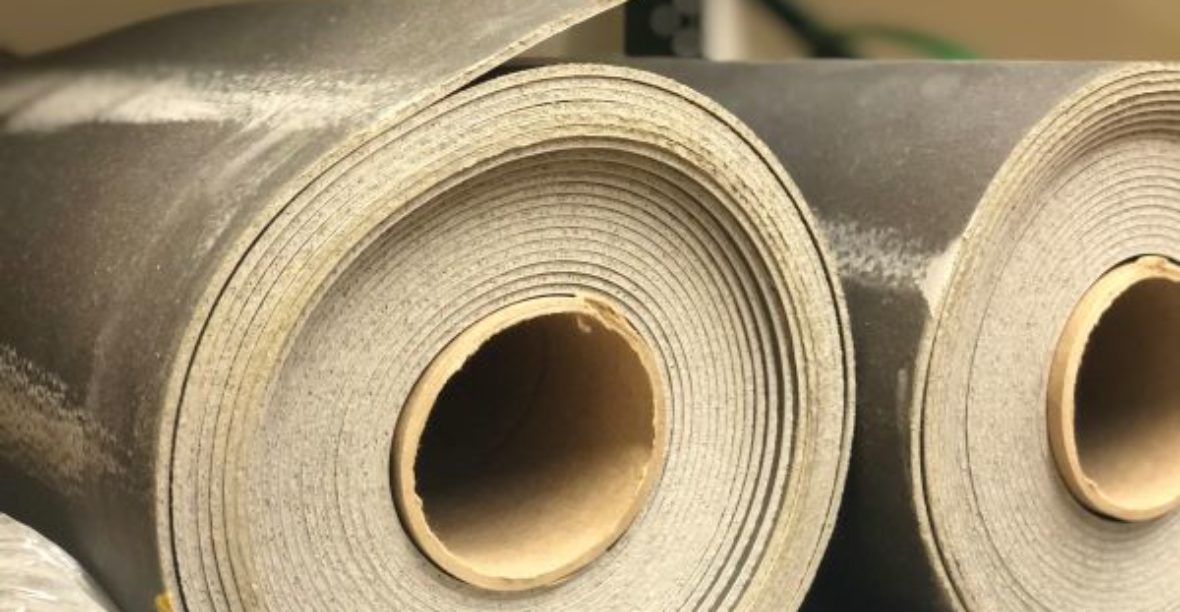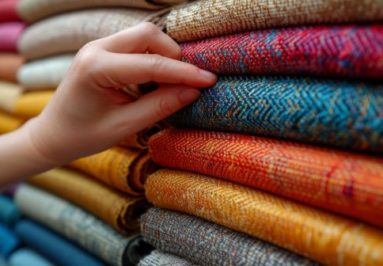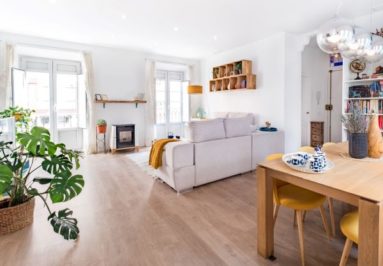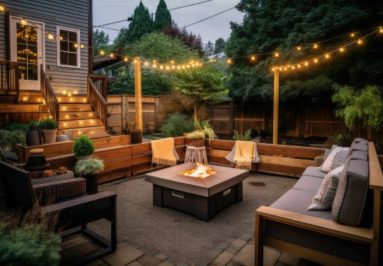The STC rating, or Sound Transmission Classification rating, of a material correlates to the amount of sound that a material is able to block. Some low STC rated products include glass windows and hollow-core doors, while some high STC rated products include mass loaded vinyl and solid-core doors.
While there are a lot of materials that have their own STC ratings, they can also combine in the form an STC rated wall or floor/ceiling assembly. And, contrary to popular belief, STC ratings of materials don’t just add up normally. For example, if you have a wall assembly with an STC rating of 33, you can’t add a later of MLV with an STC of 26 to result in a wall with an STC of 59, it would be more like 39. We won’t get into the science behind that here, but just keep this in mind when considering wall and floor soundproofing using sound membranes.
Mass Loaded Vinyl STC Ratings
Different weights and thicknesses of mass loaded vinyl’s have different STC ratings. Also, different weights and thicknesses of MLV each have their own unique purpose either in certain wall assemblies or on their own.
| Weight | Thickness | STC |
| 2 lb/sf MLV | 1/4″ | 31 |
| 1 lb/sf MLV (Wall Blokker) | 1/8″ | 26 |
| 1 lb/sf MLV With Polyester Scrim (Wall Blokker PRO) | 1/4″ | 27 |
| 0.6 lb/sf MLV (Wall Blokker Lite) | 1/16″ | 22 |
| 0.5 lb/sf MLV (Wall Blokker Lite 1/2 LB) | 1/16″ | 21 |
Uses for 1 & 2 Pound Mass Loaded Vinyl
2 lb/sf mass loaded vinyl is by far the heaviest, thickest and most expensive version of MLV. People often use 2 lb/sf MLV when soundproofing extremely loud areas such as mechanical rooms. The heavier and thicker the MLV, the better it is at also reducing low frequency sound transmission from mechanical and other similar noises.
Learn More: Best Uses for 2 lb/sf MLV
1 pound mass loaded vinyl is most often used for wall soundproofing in both commercial and residential settings. When using 1 lb/sf MLV on wood studs, you can usually achieve an STC rating in the 40’s, but on metal studs, it can help you hit STC 55+. If the wall will need to reduce sound transmission of more vibrational and low frequency sound, or if you’ll be installing MLV on existing drywall, you should use 1 lb/sf MLV with a polyester scrim. This scrim layer allows for more decoupling between rigid surfaces, helping to mitigate more vibrational noise.
Benefits of Light Weight MLV & When to Use
Using 0.6 lb/sf or 0.5 lb/sf mass loaded vinyl is most cost-effective option when used on metal stud wall assemblies. At half the weight, and around $1/SF, lighter mass loaded vinyl like this performs only 1 STC point lower in lab tests on metal wall stud assemblies than 1 lb/sf MLV. For example, a wall with 25 gauge metal studs, 24″ o.c., 1+1 drywall and Wall Blokker Lite is STC 55, while the same assembly with Wall Blokker is STC 56.
STC Ratings for Sound Batts vs Mineral Wools
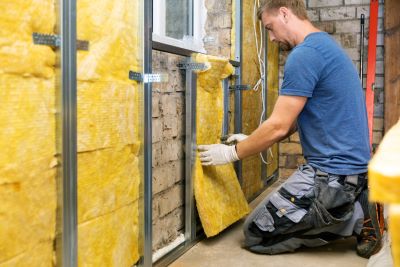
Although Sound Batts and Mineral Wools can be added to a wall assembly to help improve the overall STC rating by 1-3 points, the material itself is not STC rated, and doesn’t block sound transfer. This is a common misconception for these types of materials, as some people think they can cover an existing wall with fiberglass batt to make a wall more soundproof.
Sound batt and mineral wool on their own have an NRC, or Noise Reduction Coefficient, which shows how much sound they’ll absorb – not block. Sound absorption is important when there is echo in a space. When sound absorbing materials are placed on and existing wall, they’ll help absorb sound waves, and prevent them from reverberating around a room and creating echo.
STC Ratings for Mass Loaded Vinyl & Sound Batts
To review – there are a few different weight and thickness options for mass loaded vinyl, and each type has a different STC rating. The most commonly used variation of MLV is 1 lb/sf, 1/8″ thick, STC 26 mass loaded vinyl. There’s also 2 lb/sf MLV with a stand-alone STC rating of 31, and 0.6 lb/sf MLV with a stand-alone STC rating of 22. The type of mass loaded vinyl that someone selects to help soundproof a wall can depend on the target STC or building code required STC, and cost per square foot.
As discussed earlier, sound batts don’t have stand alone STC ratings, but they can help improve the STC of a wall when installed within the wall cavity. When exposed, sound batt and mineral wool have an NRC, or Noises Reduction Coefficient, which conveys how much sound a material absorbs, not blocks.

